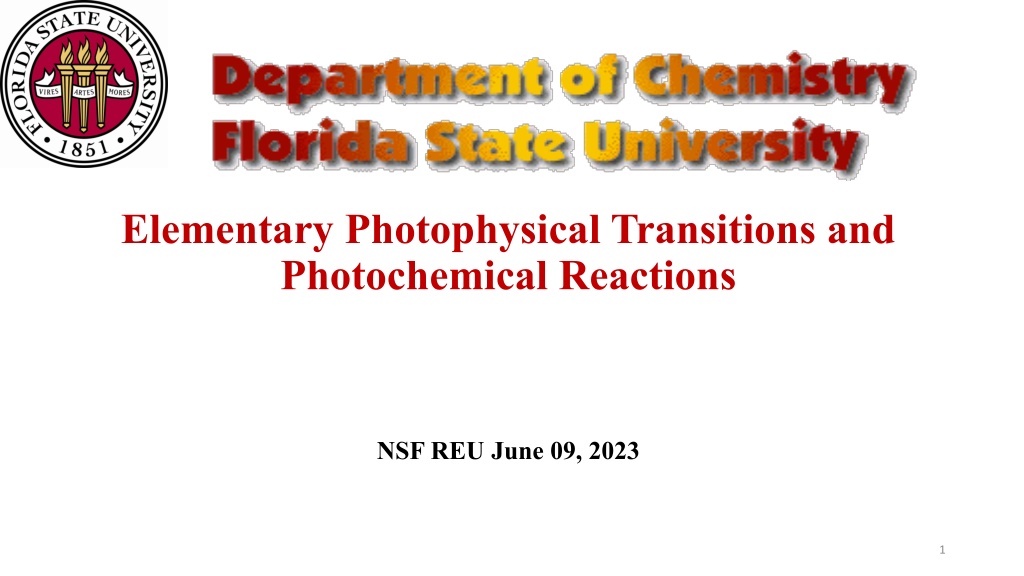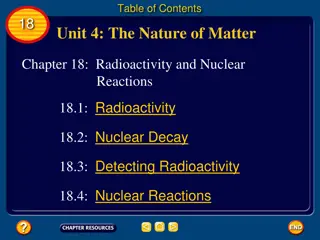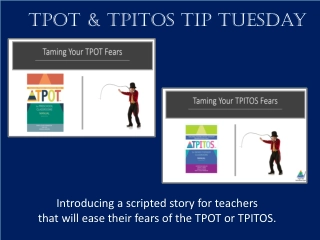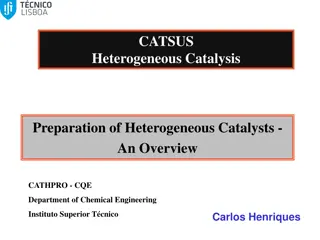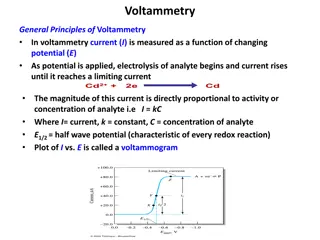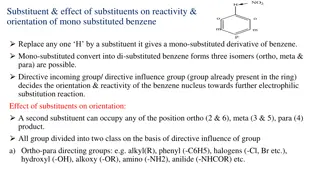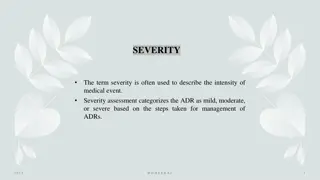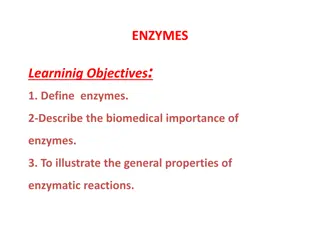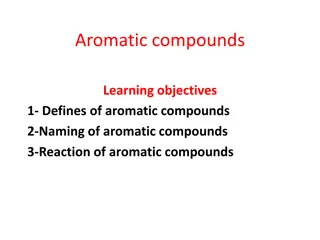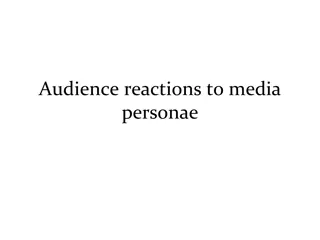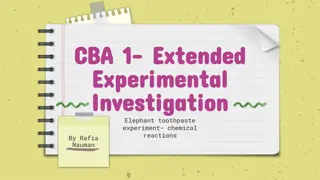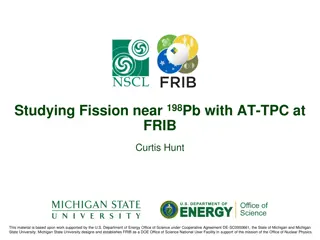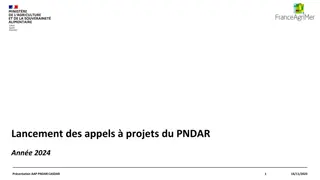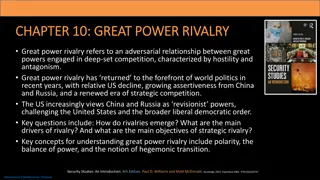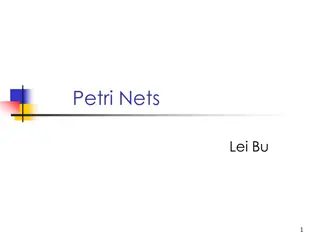Exploring Photophysical Transitions and Photochemical Reactions
Delve into the fascinating world of photophysical transitions and photochemical reactions through a collection of images showcasing key concepts such as singlet oxygen, triplet states, proton transfers, and sensitization processes. Gain insights into the intricate mechanisms governing these phenomena in chemistry research.
Download Presentation
Please find below an Image/Link to download the presentation.
The content on the website is provided AS IS for your information and personal use only. It may not be sold, licensed, or shared on other websites without obtaining consent from the author. Download presentation by click this link. If you encounter any issues during the download, it is possible that the publisher has removed the file from their server.
Presentation Transcript
Elementary Photophysical Transitions and Photochemical Reactions NSF REU June 09, 2023 1
Photochemistrys Icons Why I am here. From Photochemistry of Organic Compounds by Peter Kl n and Jakob Wirz, 2009 2
Intersystem Crossing Demchenko, A. P. et al.Angew. Chem. Int. Ed. 2014, 53, 2-11. 4
Phosphorescence and the Triplet State Gilbert N. Lewis , M. Kasha J. Am. Chem. Soc. 1944, 66, 2100-2116 Naphthalene phosphorescence triplet energies 5
External and Internal Heavy Atom Effects -Chloronaphthalene is yellow in EtI, JCP, 1952 6
Singlet O2 in Chemiluminescence and in Triplet Energy Transfer 7
Double Proton Transfer in 7-Azaindole Proton Transfer Spectroscopy 8
The Blue Daylily and Intramolecular S1 Proton Transfer in Flavonoids 9
Triplet Sensitized Stilbene Photoisomerization The Saltiel Plot Hammond, G. S.; Saltiel, J. J. Am. Soc. Chem.1962-1964. 12
The Photostationary State 1 d[ t] dt d[ c] dt [ S*][ t] [ S*][ c] [ c] [ ] [ t] 1t-St + 3S* 3t* 3p* 3p* 1t + (1- )1c 1c-St + 3S* 3t* + 1S* = + = 3 1 1 [ S*][ t] [ p*] 0 k k t d 1 = + ) [ p*] 0 k = 3 1 1 [ S*][ c] (1 k c d 3c* + 1S* = = 3 1 1 [ p*] ) [ p*] ) k k t d 3 1 1 (1 k k c d 1 [ ] (1 [ ] k k t = PSS 1 c 13
62 kcal/mol 57 kcal/mol Vertical Excitation 49 kcal/mol Vertical Excitation 5 kcal/mol 14
H H CH3-CH3 C C Average bond energies C-C 83 kcal/mol C=C 146 kcal/mol bond ~ 63 kcal/mol H H H H H H
cis- and trans-2-butenes are stable separable isomers. They have the same connectivity and are stereoisomers. Rotation about a double bond occurs only at very high T or following light absorption. bond ~ Eact = 66 kcal/mol 18
SpinStates ( ( + + ) ) ( ( ) ) T T T S 19
Absorbance 170 nm 217 (21,000) 263 (52,500) 239 (3,400) 256 (8,000) max( ( max) ( )n n max x 10-3, M-1cm-1 28 53 80 86 max, nm Effect of Conjugation 1 2 3 4 294.1 328 348 404 20
Molecular Orbital Analysis of the Diels-Alder Reaction The diene is the electron donor and the dienophile is the electron acceptor. The concerted nature of the D-A reaction can be understood by considering the interaction of the HOMO of the diene with the LUMO of the dienophile (Fukui/Kyoto, Woodward/Harvard, Hoffmann/Harvard now Cornell---Nobel prize in Chemistry) 1965 1981 21
HOMO LUMO EWG 22
Frontier Orbital Control of Diels-Alder Reaction HOMO Donor LUMO Acceptor EWG 23
Electrocyclic reactions are stereospecific CH3 CH3 175 oC h CH3 CH3 CH3 h 175 oC CH3 24
Thermal reaction CH3 CH3 CH3 H3 C conrotatory Rotation in the same direction leads to a bonding interaction (+ lobe on + lobe or - lobe on lobe). The reaction passes through the same TS in both directions. 25
Photochemical reaction CH3 CH3 CH3 h H3 C disrotatory Rotation in opposite directions leads to a bonding interaction (+ lobe on + lobe or - lobe on lobe). The reaction passes through the same TS in both directions. 26
NEER PRINCIPLE * Havinga, Tetrahedron, 1973 ct = 0.03, tc = 0.016 hv * | florida state university | | florida state university | Egbert Havinga 1909-1988 * hv small_color_torches-new small_color_torches-new * hv * * Havinga, E.; Schlatmann, J. L. M. A Tetrahedron 1961, 16, 146-152. 27
1,6-Dideuteriohexatrienes ttt-Htd2 in C6D12 ctt-Ht cct-Ht C6D12 x tct 0.44 0.085 0.34 CD3CN x tct 0.54 0.093 0.39 0.014 ttt x ttt 0.245 x ctt cct tct ttt x 0.24 0.058 0.11 Saltiel, J.; Redwood, C. E.; Laohhasurayotin, K.; Samudrala, R. Photochemistry of the 1,6-Dideuterio-1,3,5-hexatrienes in Solution: J. Phys. Chem. A 2018, 122, 8477-8489. 28
Havingas NEER Principle PreVit PreVit D D Conform Conform ers ers R R Egbert Havinga 1909-1988 h H O H O H Pro Photocyclization Long (-)cZ(-)c R R h H O H O R H Lumi (+)cZ(+)c R OH Photoisomerization Short h H OH Tachy (+)tZ(-)c 29
NPE Conformers | florida state university | | florida state university | t-NPEA t-NPEB small_color_torches-new small_color_torches-new c-NPEA c-NPEB NPE conformers 30
Fluorescence Emission Spectra of t-NPE as a Function of exc in Ar Outgassed Benzene at 20 oC 1.0 t-NPE/Bz 0.8 | florida state university | | florida state university | Normalized Intensity exc = 320 nm exc = 345 nm exc = 350 nm 0.6 small_color_torches-new small_color_torches-new 0.4 0.2 0.0 330 350 370 390 410 430 450 470 490 510 33 , nm
Summary of PCA-SM Mathematical Operations Covariance Matrix Transposed Matrix Spectral Input Matrix x = Number of Components Eigenvalues Diagonalized Matrix Eigenvectors Eigenvector Matrix i = V Si, i =V Si Si = iV + iV Pure Component Spectra SA= AV + AV SB= BV + BV Experimental Spectra Si = iV + iV Pure Component Coefficients A, A and B, B 34
Plot Principal Eigenvectors Standard Deviation 0.125 0.0 0.1 0.2 0.3 0.015 Normalized Intensity 0.065 Stern-Volmer equation: 0.009 = 1 + KSV[Q] 0.005 0.003 -0.055 -0.115 -0.003 -0.175 330 350 370 390 410 430 450 470 490 510 , nm Global Stern-Volmer Plots -0.009 0.0500 Conformer Spectra 0.0775 0.1050 3.0 1.0 t t- -NPE/PCA NPE/PCA- -SM SM t-NPEA t-NPEB Normalized Intensity 0.8 t-NPEA 2.0 t-NPEB 0.6 o 0.4 1.0 Global Stern-Volmer equation: 0.2 A[Q] F0( )/F( )= 1 + KSV 0.0 -0.0004 0.0013 0.0030 0.0046 0.0063 0.0080 [O2]/M0.0 36 330 350 370 390 410 430 450 470 490 510 , nm
Stern-Volmer Quenching Equation Rate 1A + h exc 1A* Ia 1A* 1A + h f kf[1A*] kis[1A*] 1A* 3A* kp[1A*] 1A* P kq[Q][1A*] 1A* + Q 1A + Q* 37 S-V Kinetics
The Stern-Volmer Plot 1 d[ ] h k d[ ] h = = = o f f f k f= 1 k [ A*] f + + I dt k k k f dt 1 a f is p d[ A*] = + + 0 = 1 I ( )[ A*] k k k where Ia is the rate of light absorption a f is p dt I k = 1 [ A*] a k k + + k k = = f k f f is p f + + + + [Q] 1 k k k k [Q] f is p q q d[ ] I h k = f f a + + ( dt k k k f is p ) 1 = + [Q] 1 = + o f / [Q] k K f q SV 38
Multidimensional Isomerization Conical Intersections Trapping Twisted Intermediates ?? ? ? ?? ???? ?????= ?? ?? ????? B. G. Levine, T. J. Mart nez. Annu. Rev. Phys. Chem. 2007, 58, 613-34. Saltiel, J.; Gupta, S. Photochemistry of the Stilbenes in Methanol. Trapping the Common Phantom Singlet State. J. Phys. Chem. A2018, 122, 6089-6099. 46
Acknowledgments PCA-SM C. Redwood L. Zimanyi Experimental Gosia Bayda, Shipra Gupta Sumesh Krishnan Support NSF (1965-2020) 48
